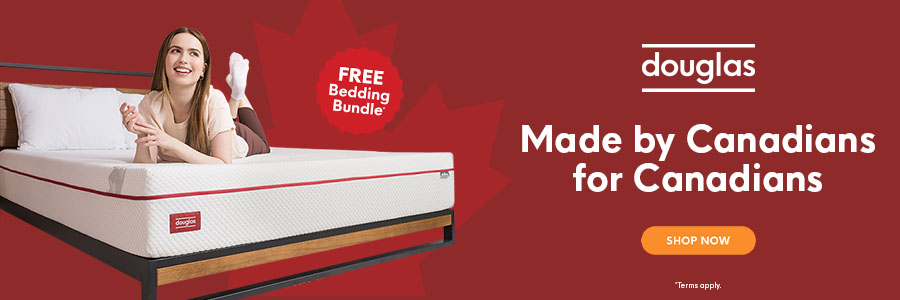- 365-night sleep trial, 20-year warranty, and free bedding bundle with purchase
- Excellent motion isolation
- Cooling gel foam comfort layer
How to Choose a Mattress (2025)
Updated: December 10, 2025 | Published: July 2, 2024There are a lot of brands out there. Mattress shopping can quickly become overwhelming, even with careful research and consideration. But it doesn’t have to be.
In this guide, we’ll help you find the mattress that’s right for you. We’ll walk through budgeting, types of mattresses, firmness, features, what to look for in a mattress company, and much more. Let’s get started.
1. Set a mattress budget
Your next mattress shouldn’t cost more than $2,000. You can get most (or all!) of the features you need at that price point, as long as you keep your budget and expectations realistic.
There are many quality Canadian mattress brands at this price point, all available in a wide range of sizes. These are our top picks:
- Douglas ($599–$1,399) is an excellent all-foam mattress with a machine-washable cover, excellent pressure-point relief, and comfortable support in any sleep position. It comes with a 365-night sleep trial, a 20-year warranty, and a free bedding bundle.
- Logan & Cove ($799–$1,999) provides a luxury sleep without the luxury price tag. This hybrid mattress comes with individually wrapped pocketed coils, a quilted top cover, a 365-night sleep trial, a 15-year warranty, and a free bedding bundle.
- Juno ($399–$599) is an all-foam mattress that’s perfect for mattress shoppers on a budget. It comes with a 120-night sleep trial, a 15-year warranty, and a free bedding bundle.
- Octave ($699–$1,699) is a memory foam mattress made with premium foams and high-end materials for engineered comfort and ergonomic support. It provides zoned support, targeted pressure-point relief, and advanced cooling features. Octave comes with a 365-night sleep trial, a 15-year warranty, and a free bedding bundle.
Even if your budget is tight, we recommend not considering mattresses priced lower than $400 for a queen size. These mattresses are often made from low-quality materials that break down soon after purchase. They also tend to have shorter sleep trials and warranty periods.
Cheaper foam and hybrid mattresses often use lighter-density foams. These break down more easily than high-density foams—meaning you’ll be mattress shopping again much sooner than expected.
READ MORE: Discover the best affordable mattresses in Canada
2. Choose a mattress type
There’s more than one way to build a mattress. Before buying, take the time to think about what mattress type works best for you. Here’s an overview of the most common types of mattresses:
Foam
Foam mattresses are popular because they provide good pressure-point relief and are often more affordable than other types of mattresses.
Most foam mattresses have at least two layers, with lighter-weight foam on top and denser support foam on the bottom. Mattresses with three or more layers often infuse the added layers with gel, graphite, copper, or other materials to provide cooling benefits.
Here’s one example of foam mattress construction, based on Douglas Original:
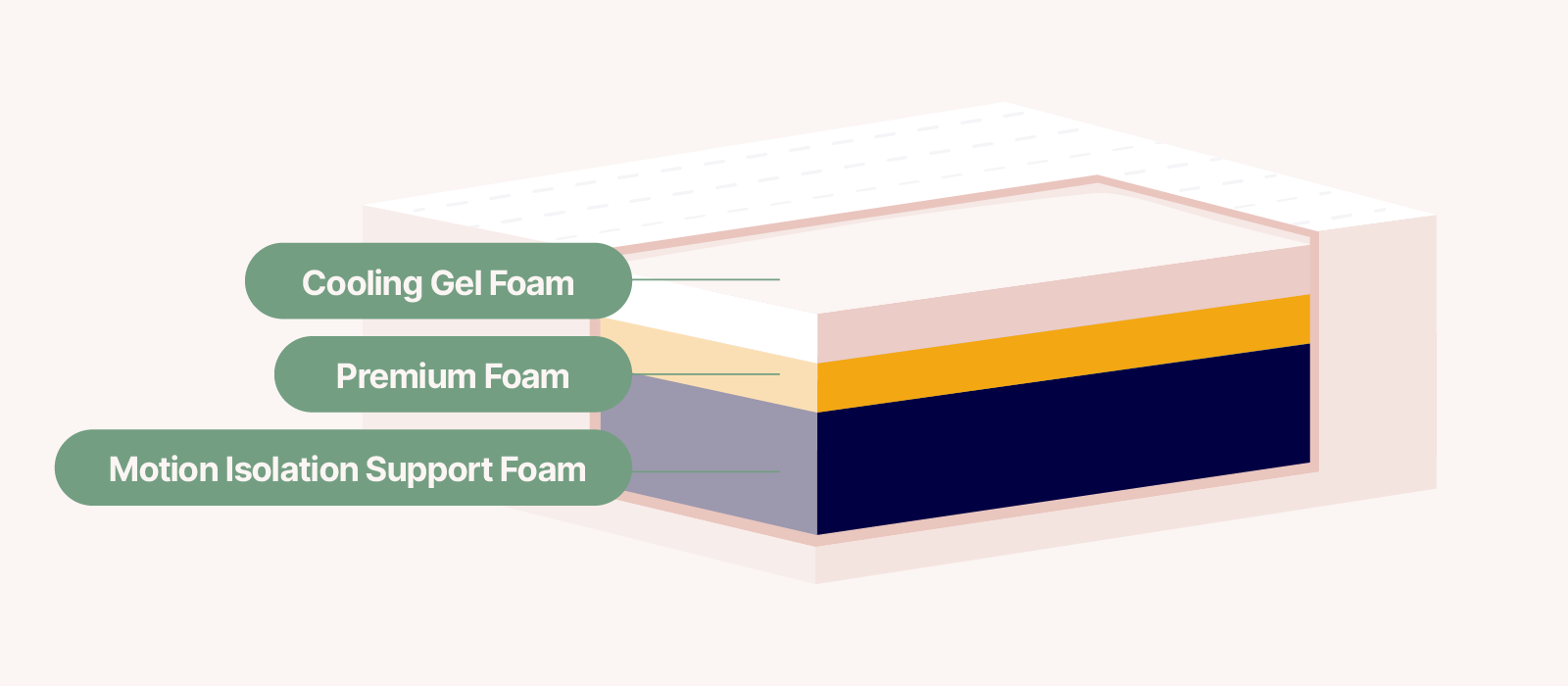
Hybrid
Hybrid mattresses combine the pressure-relieving qualities of foam with the responsive support of innersprings. Hybrid mattresses are best for heavier sleepers, hot sleepers, combination sleepers, and couples who have different support needs or body types.
Hybrid mattresses usually have at least one layer of foam above a layer of metal coils. These coils often provide good edge support. Coils that are individually pocketed can also improve motion isolation.
READ MORE: Foam vs hybrid mattress: which is right for you?
Below is an example of hybrid mattress construction, based on Logan & Cove Choice:
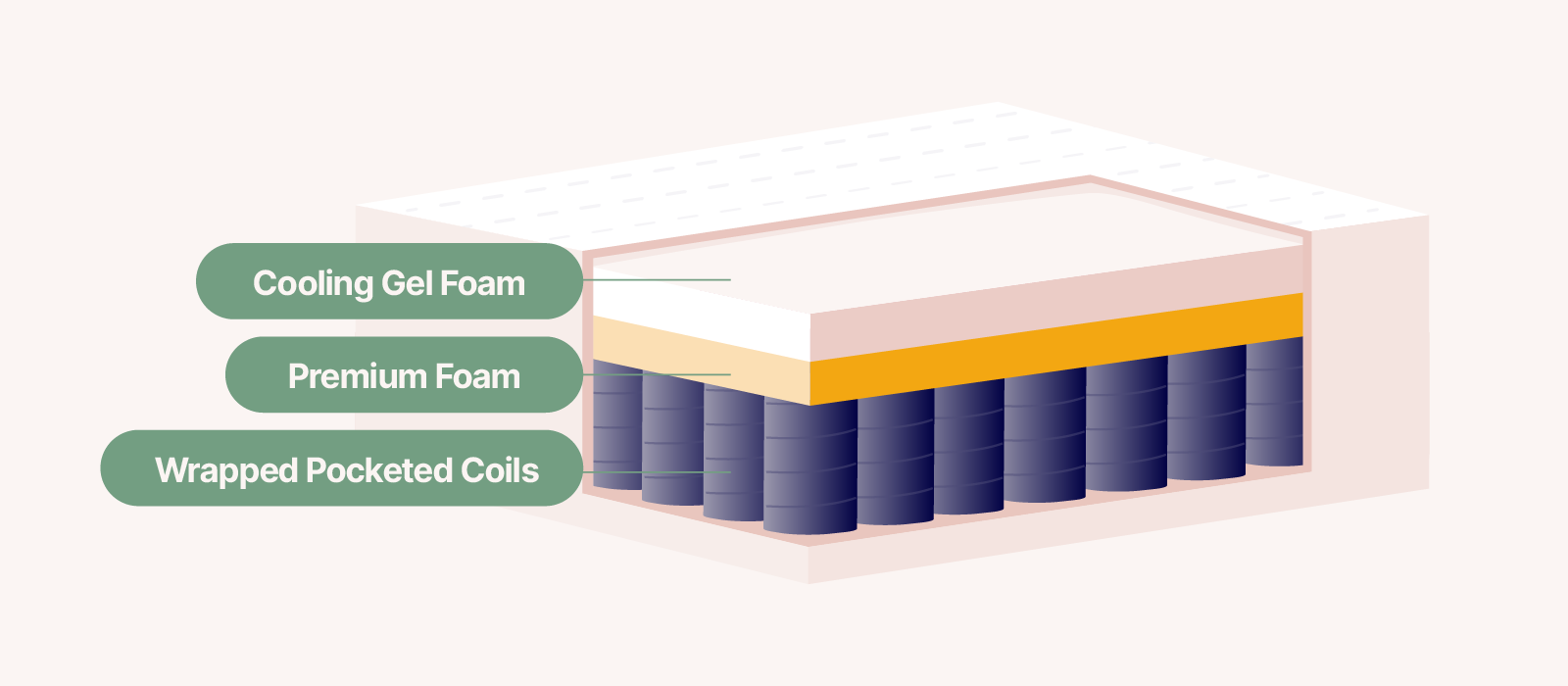
Innerspring
Innerspring mattresses are a classic type of mattress and one of the most familiar for many sleepers. These mattresses use steel coils to provide most of their support, with a thin layer of foam on top for comfort.
This type of mattress is known for being very durable and firmer than other mattress types. Innerspring mattresses tend to have better airflow, which is good if you’re a hot sleeper.
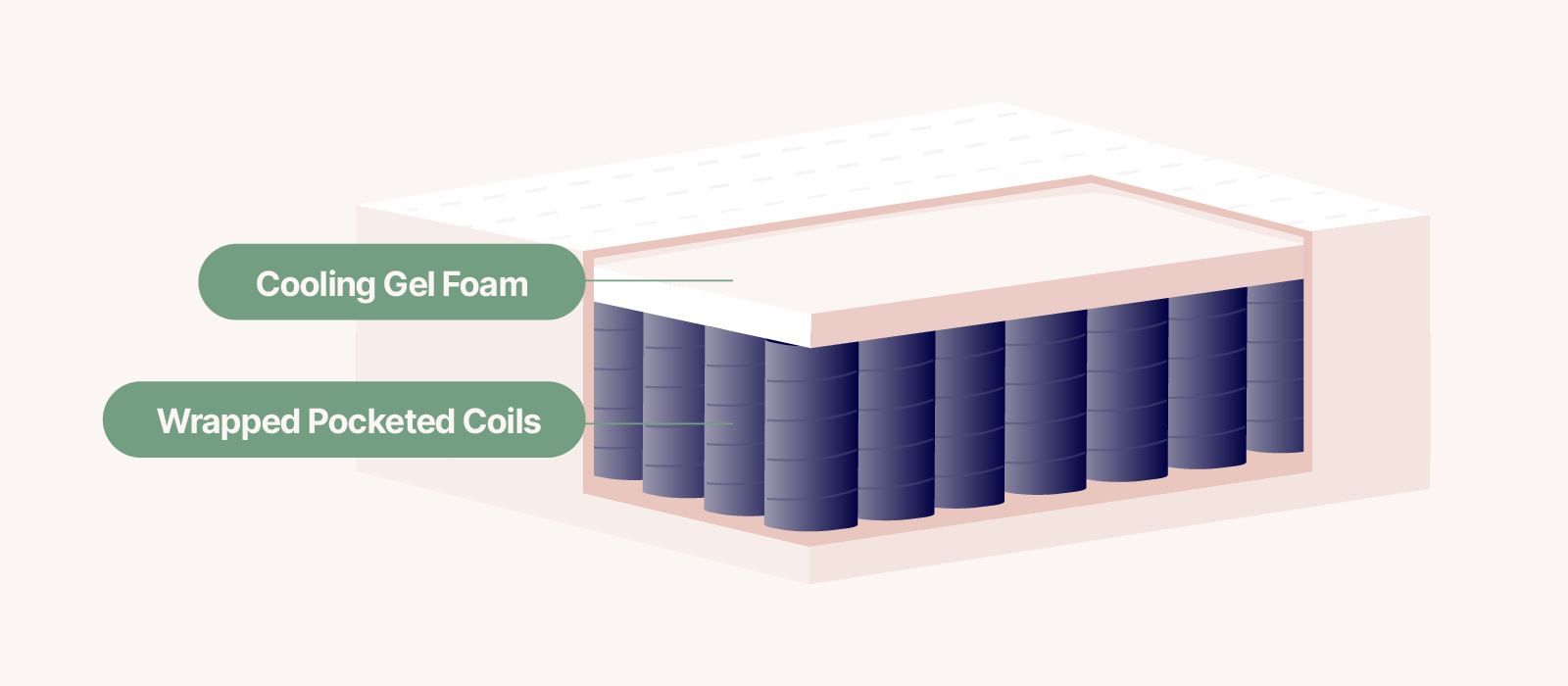
Latex
Like the name suggests, latex mattresses include natural, synthetic, or blended latex. Latex mattresses offer excellent cooling, support, and durability. They’re also bouncier than other mattress types.
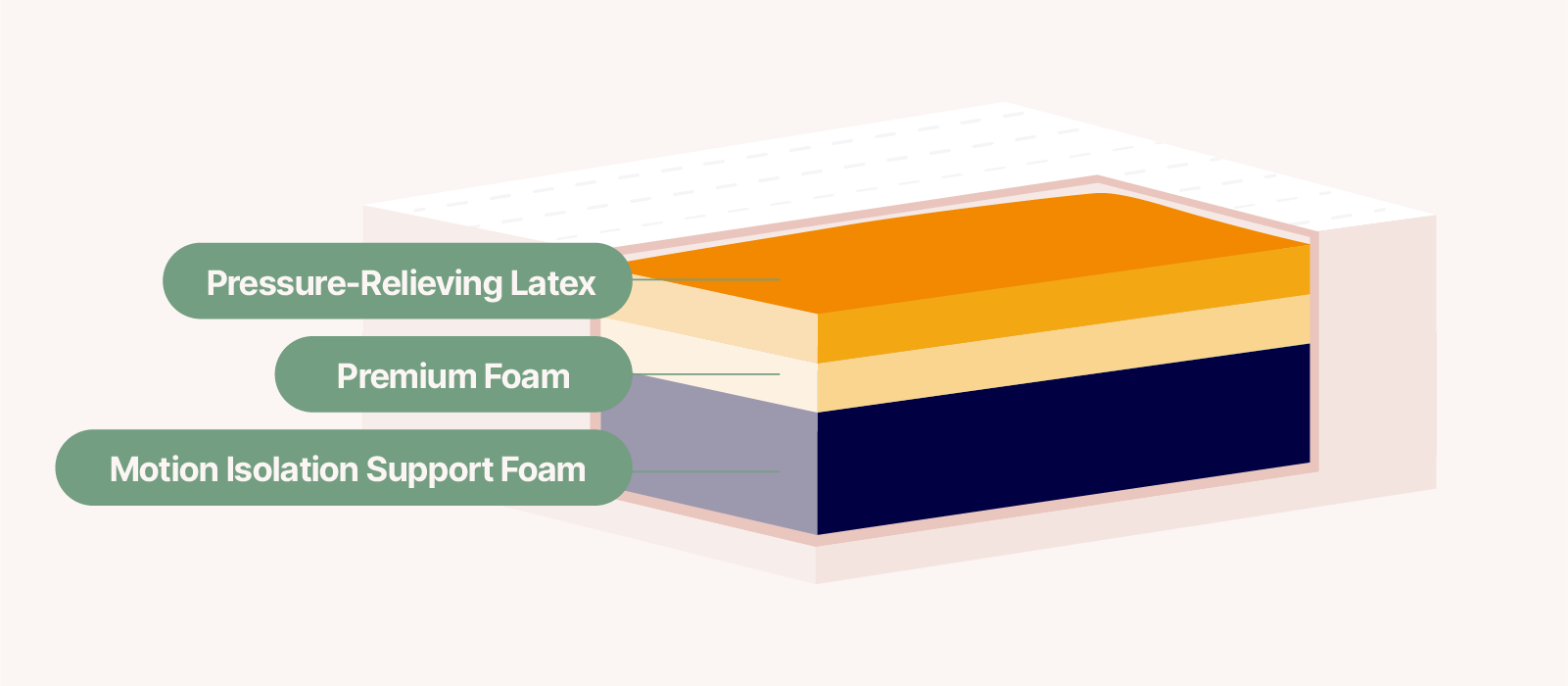
Latex mattresses made using natural latex tend to be more eco-friendly, but they also cost more to manufacture. You can expect to pay close to $2,000 or more for a latex mattress.
3. Find the right firmness for your sleep position
Mattress firmness is one of your top considerations when you’re mattress shopping. While medium-firm mattresses are suitable for all sleep styles, you should choose a mattress based on the position you prefer.
Side Sleepers
The best mattress for side sleepers is often one with a medium level of firmness. This firmness level provides pressure-point relief along the hips and shoulders, which are common areas of discomfort for side sleepers.
A mattress that’s too firm can misalign your spine and harm your joints, while a mattress that’s too soft may not provide adequate support and cause back pain.
Back Sleepers
The best mattress for back sleepers is a medium-firm mattress. This firmness level keeps the spine properly aligned while still contouring around your body’s natural curves.
The right level of firmness keeps your spine from overarching and prevents your body from sinking too deeply into the mattress, which can lead to lower back pain.
Stomach Sleepers
The best mattress for stomach sleepers is one with a medium-firm to firm feel. This helps keep your lower body from sinking too far into the bed, and can relieve pressure on your lower back and hips.
4. Identify the features you need in a mattress
When you’re shopping for a mattress, it’s important to consider more than just how comfortable it is. There are a whole range of factors to keep in mind.
Materials
The materials in your mattress define a lot of its character. Find out what materials the mattress contains, especially if you’re sensitive to things like latex or wool.
If your potential mattress purchase includes foam, check to make sure it has CertiPUR-US® certified foams. This means the mattress meets certain health and eco-conscious requirements.
Don’t forget the mattress cover, too, especially if you’re looking for one that’s removable and machine washable. You should also make sure the mattress is fiberglass-free, since fiberglass in mattresses can be a health hazard.
Motion Isolation
Motion isolation determines how much you’ll notice movements from elsewhere on the mattress. If you, your partner, or your pets move around during sleep, this feature should be important to you.
You’re more likely to enjoy a restful (not restless) night’s sleep on a mattress with high motion isolation. Foam and latex mattresses often have good motion isolation, as do many hybrids.
Edge Support
This is how well the mattress’s sidewalls support your weight. You’ll likely want a mattress with good edge support if you sleep near the edge of the bed, often sit on the edge of the mattress, or have trouble getting out of bed.
Innerspring and hybrid mattresses tend to have good edge support because of their metal coils. That said, we’ve also seen foam mattresses with exceptional edge support due to their higher foam density.
Bounce
Bounce is a matter of preference. Low-bounce mattresses let you sink into your mattress, giving you a bit more “hug,” while high-bounce mattresses make it easier for you to get out of bed.
Foam mattresses tend to be less bouncy, while innerspring and latex mattresses are often more bouncy. Hybrids typically fall somewhere in between. However, bounce will vary depending on the individual mattress.
Contouring
Depending on your sleep style, you may want a mattress that contours to your body in a specific way. Many mattresses will contour to your body to provide pressure-point relief.
In addition to contouring, you may also want a mattress with zoned support. This provides extra support beneath your lower back and hips. You might prefer this feature if you have issues with your joints, spine, and posture.
Responsiveness
A mattress’s responsiveness determines how it reacts to motion and pressure. This affects how easy it is for you to move around on your bed and change your position while sleeping.
Foam mattresses are generally the least responsive type of mattress, while innersprings and hybrids are more responsive because of their metal coils.
Temperature
If you sleep hot, you need features to help keep temperatures low. Look for mattresses with moisture-wicking or temperature-balancing covers, as well as advanced technologies like cooling gel foam and phase-change material.
Certain types of mattresses naturally provide a small amount of cooling, like innerspring and latex. However, if you’re looking at memory foam, you’ll need extra cooling features to avoid overheating—and you’ll want to consider our list of the best cooling mattresses.
READ MORE: Should you buy Eight Sleep?
Noise
No one wants to hear their bed while they’re sleeping—or during certain nighttime activities. If you’re a light sleeper or bothered by noise, test the mattress to see how loud it will be.
If noise is a big factor in your decision, you may want to avoid innerspring or hybrid mattresses. While some of these mattresses can be quiet, their moving coils could squeak and creak while you’re in bed.
Weight Support
Your bed should support your body’s full weight while lying down, and different body types require different levels of support.
- If your body is lighter than average (under 150 pounds), you won’t sink too deeply into your bed. A soft to medium-firm mattress could be a good choice.
- If your body is average weight (150–200 pounds), consider a medium to medium-firm mattress.
- If your body is heavier than average (200+ pounds), think about getting a medium-firm mattress with zoned support. This will stop you from sinking too deeply into your bed.
READ MORE: Discover the best mattresses for heavy people
Whatever mattress you choose, check that it’s available in the mattress size you want. Having the right foundation matters, too, so make sure you have the right type of bed frame for the mattress.
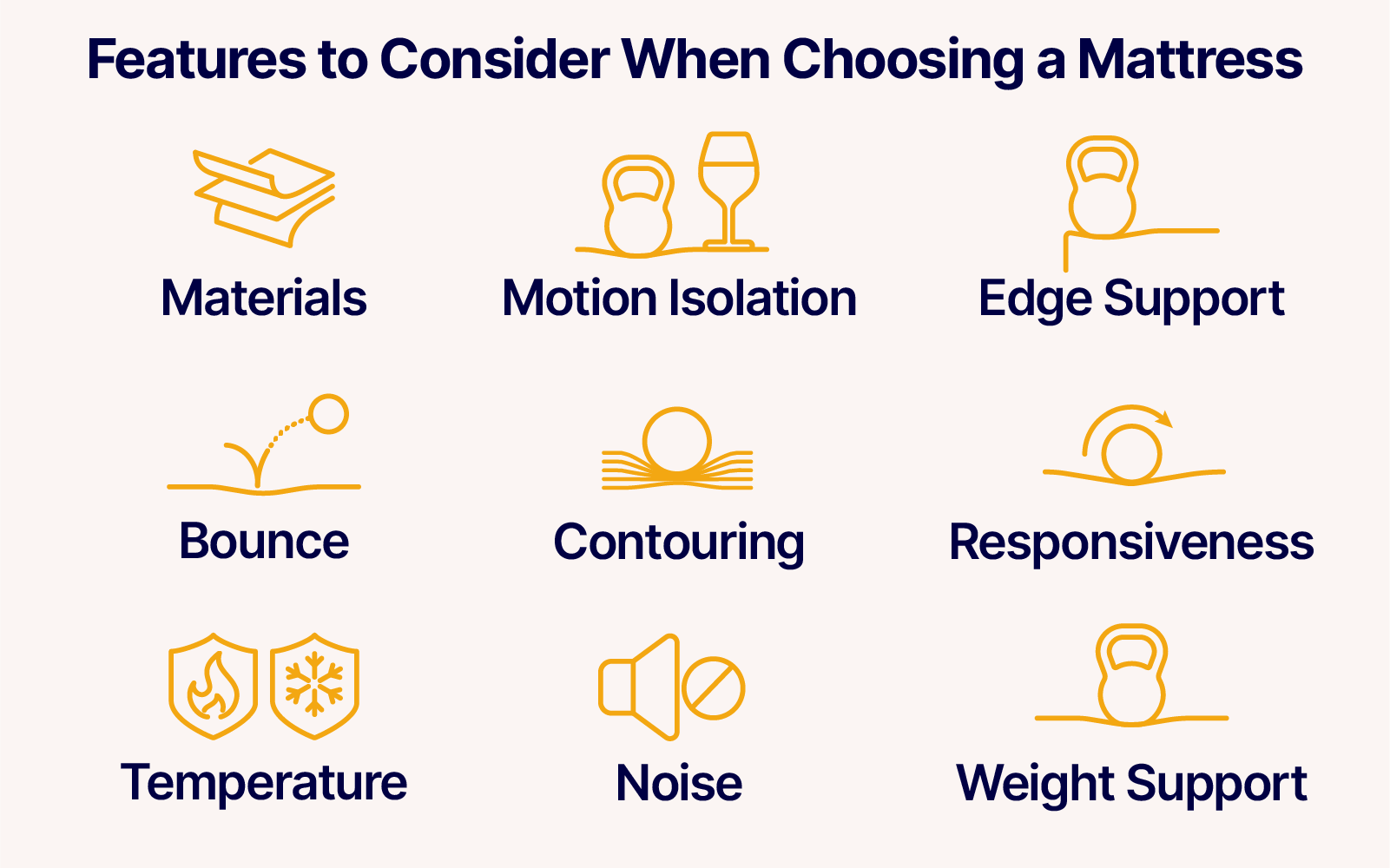
5. Find the right mattress company
Before you commit to buying a mattress, it pays to know about the company behind the brand.
Understanding a company’s history and business practices will give you a good idea of how well they treat their customers—and how well they’re likely to treat you.
- Check consumer trust websites. Visit sites like Better Business Bureau and Trustpilot to research the brand before you buy. You can read customer reviews and identify possible issues with the company, like shipping delays or customer service concerns.
- Read the company’s warranty policy. Make sure you understand what the company will and won’t do if you need to make a warranty claim. Some companies offer separate warranties for specific parts of the mattress, and some warranties require you to use a certain type of foundation. Avoid mattresses with a warranty of less than 10 years.
- Investigate shipping, sleep trials, and returns. Look for a mattress brand with free shipping and a sleep trial longer than 100 nights. Check the return policy to make sure you’ll get a full refund, and watch for hidden fees or restrictions when it comes to returns and exchanges.
When it comes to Canadian mattress brands, we recommend the ones below. These companies are rated “A+” on BBB and “Excellent” on Trustpilot—and all of them go the extra mile to meet your needs.
- Douglas provides good motion isolation, edge support, and pressure relief. This foam mattress comes with free shipping, a generous 365-night sleep trial, and a 20-year warranty. Douglas also offers free return pickup with a full refund. Prices start at $599.
- Logan & Cove is a luxury hybrid mattress without the luxury price tag. It comes with premium details, a 365-night sleep trial, a 15-year warranty, free shipping, and full refunds with return pickup. Prices start at $799.
- Juno offers the most value with free shipping, a 120-night sleep trial, a 15-year warranty, and a full refund if you’re not satisfied. Prices start at $399, making Juno an excellent all-foam mattress on a budget.
- Octave memory foam mattresses are crafted with premium materials and innovative construction to relieve tension and pressure in joints and muscles, support proper spinal alignment, and aid the body’s natural overnight recovery process. Octave comes with free shipping, a 365-night sleep trial, a 15-year warranty, and free return pickup with a full refund. Prices start at $699.
Frequently Asked Questions
When should you buy a new mattress?
If you sleep in the same bed every night, you can expect your mattress to last for 6–12 years. Get ready to buy a new mattress if you notice visible signs of damage, or if it’s making new and unpleasant sounds when you lie down or change positions.
READ MORE: How long should a mattress last?
Where should I buy my next mattress?
You can buy your next mattress online or in store. Just do your research to make sure the mattress company has positive customer reviews, a good warranty, free shipping, a generous at-home sleep trial, and a fair return policy with full refunds.
Want to have your mattress delivered straight to your door? Get started now with our guide to the best online mattresses.
What is a sleep trial?
A sleep trial allows you to test your mattress at home for a certain period of time, and return the mattress during that time if you don’t like it. The average sleep trial is 100 nights, but this can vary depending on the mattress brand.
Most retailers will agree to return or exchange your mattress if you’re not satisfied with it, but return policies can have some pretty big limitations. Companies may require you to pay a fee to return your mattress, and a refund might not be possible.
Sleep Country, for instance, offers a 100-night exchange period with a $65 return fee. There are no refunds—you can only trade in your mattress for another. You’ll have to pay the difference if you choose a more expensive mattress. Sleep Country also doesn’t offer pickup service for returns, meaning you have to bring the mattress back to the store yourself.
On the other hand, some online mattress brands have much more customer-friendly sleep trials. For example, Douglas offers a generous 365-night sleep trial. This includes free return pickup and a full refund if you’re not satisfied.
How long is the average mattress warranty?
Most mattress warranties last for 10 years from the date of purchase. This is standard for the mattress industry. Warranties may be shorter or longer, depending on the company. For example, Douglas provides a 20-year mattress warranty—much longer than average.
Mattress warranties will cover defects in manufacturing and materials, as well as significant sagging that occurs over the course of normal wear and tear. They don’t usually cover rips, tears, or other damage that you might cause.
Next Steps
There’s no one-size-fits-all bed for everyone. You deserve a mattress that works for you, no matter how you sleep or what your budget is.
Below are our top recommendations for the best mattresses in Canada, ranked by comfort and features. All of these brands come in a full range of standard sizes and offer queen-size mattresses for under $1,000.



The manufacturing origin listed here is based on the law label of the specific mattress we tested. Learn more >
Douglas Original
Best Canadian Foam Mattress

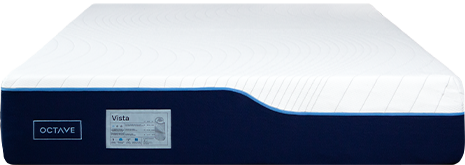

The manufacturing origin listed here is based on the law label of the specific mattress we tested. Learn more >
Octave Vista
Our Top Pick For a Good Night’s Sleep
- 365-night sleep trial and 15-year warranty
- Advanced cooling features and five-zoned support system
- Advanced memory foam for soothing pressure relief

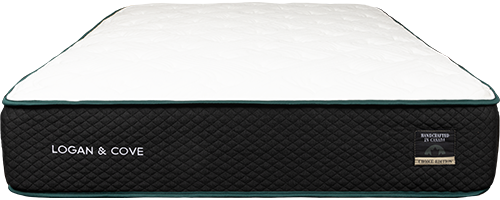

The manufacturing origin listed here is based on the law label of the specific mattress we tested. Learn more >
Logan & Cove Choice
Our Pick for Best Canadian Hybrid Mattress
- 365-night sleep trial and 15-year warranty
- Zoned support and advanced cooling features
- Free bedding bundle with purchase



The manufacturing origin listed here is based on the law label of the specific mattress we tested. Learn more >
Juno
Best Canadian Value Foam Mattress
- 120-night sleep trial and 15-year warranty
- Prices as low as $399
- Comes with a free bedding bundle with a cotton sheet set, pillow(s), pillow protector(s), and a mattress protector


